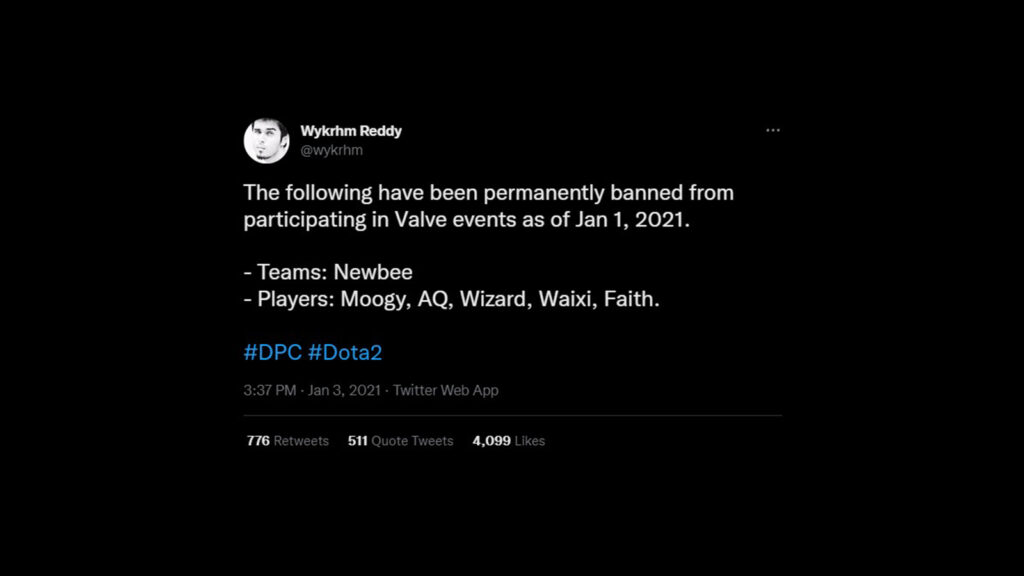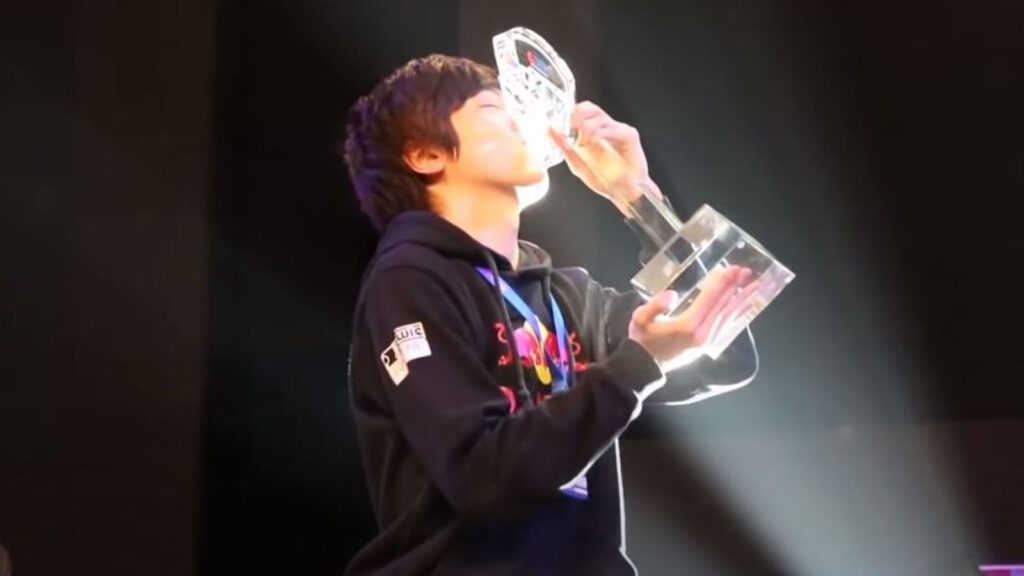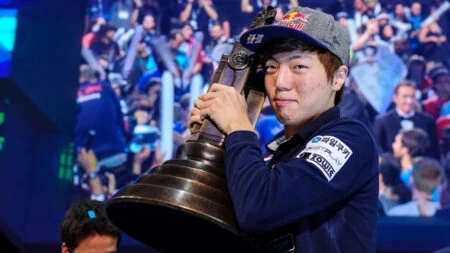Updated on November 30, 12:40 p.m. (GMT+8): Edited photos.
It’s one of esports’ greatest taboos and also one of the toughest topics to talk about.
If you’re unfamiliar, match-fixing in esports is when a player or team deliberately throws the match for some kind of gain. The most common type of match-fixing in esports happens through betting, a team with low odds will bet on their opponent and purposely lose to cash in on their higher odds.
There’s currently a huge misconception where it’s thought that match-fixing only happens in amateur leagues, mostly due to financial instability. Many upcoming pros simply don’t earn enough doing esports full-time until they start hitting the big leagues.
The thing is, match-fixing doesn’t end there.
Match-fixing in esports isn’t exclusive to amateur leagues

In 2021, Valve permanently banned Newbee’s Dota 2 squad from competing in all official Valve events due to the team’s match-fixing case back in May 2020.
When the news originally broke, the community was stunned. Esports in China is huge and Newbee was no small player in the scene. The team even had well-respected veterans, Xu “Moogy” Han and Zeng “Faith” Hongda onboard. It’s common knowledge that all esports players in China are paid salaries by their organizations on top of what they win.
It’s so strange that the players and coach would get involved with match-fixing when Valve themselves have made it explicitly clear that teams caught match-fixing would be banned from Valve events for life.
Both Faith and Moogy have had extremely successful Dota 2 careers up until now. Both players have earned well over a million dollars through tournament winnings alone, and having big names they likely had sponsorship deals coming in as well. So why now?
The story of a fallen star

Starcraft II suffered a massive blow to the scene back in 2016 after one of Starcraft’s most talented upcoming stars, Lee “Life” Seung Hyun was found to have been involved in match-fixing.
In 2015, financial brokers who were part of a betting syndicate managed to convince the 2014 Starcraft II World Champion to throw matches in exchange for huge sums of money. The young Korean received over USD$60,000 to drop matches at the GiGA internet 2015 KeSPA Cup.
Behind the scenes, the syndicate had placed numerous bets online on the fixed matches, with the largest single bet almost totaling USD$90,000. With that much money floating around, the authorities began their investigation.
Life ended up being arrested and was sent to jail for two months while awaiting his sentence. He ended up being sentenced to 18 months imprisonment suspended by three years and fined USD$65,000. It didn’t end there, Life was also banned from ever competing in any future Starcraft II tournaments associated with KeSPA. His career in Starcraft II vanished.
The damage didn’t end there either. Just a year after the incident, KeSPA almost completely removed themselves from the Starcraft II scene. As a huge organization that acted as the backbone of Korean Starcraft, this was a big deal. This move alone would have completely destroyed Starcaft II’s esports scene if it wasn’t for Blizzard who had to step in and take KeSPA’s place.
What causes match-fixing?
This is a tough cookie to crack because the reasons behind match-fixing aren’t cut and dry.
It can happen at either end of the esports pyramid and anyone can be a victim. Not much goes public when a match-fixing scandal is brought to light but imagine the possibility of someone’s esports career going down the toilet because their life was threatened unless they agreed to match-fixed.
Though match-fixing comes down to the individual teams and players who play the matches, there are so many other factors that can push someone over the edge of temptation.
Player financial instability
Without a shadow of a doubt, many agree that esports is very top-heavy. In that, most of the fame and money you see in the scene is circling a small group of players and organizations.
Don’t get me wrong, these guys clearly deserve to be where they are and anyone who reaches the esports summit deserves everything up there. But what about those wanting to make it to the big leagues?
Currently, there is very little funding for the tier 3 esports scene. Amateur tournaments are scarce, have much lower prize pools, and sponsors are very hard to come by as a team or player with no name. Unfortunately, this is where the temptation to match-fix can kick in.
Money may be part of the problem but the root cause is actually a lack of player education. Everyone sees the glitz and glam of the esports world but never sees the work put into reaching it. Too many people will drop everything they’re doing in life to pursue esports. This includes working.
If you want to pursue esports as a career, go for it. Just be prepared.
Make a plan, esports really isn’t for everyone. Don’t be afraid to give yourself a timeline. Work on the side so that you also have a source of income to support you along the way. Tournament winnings should be additional income, not your main source.
This is a big one. Build. Your. Brand. Too many players think esports is all about playing the game. If you make a name for yourself, even if you can’t make it to tier 1, you can still pull in sponsorship deals and really go full-time.
Match-fixing should never be a solution for anything.
Easy access to esports betting sites
As esports grew, so did the number of esports betting sites. One of the big issues we’re currently faced with is how easy it is to bet on esports. You just make an account and start betting immediately. Very rarely are these sites monitored for any misconduct.
Real-life sports also allow for betting but there are precautions put in place to help detect match-fixing. Take FIFA for example, they have something called an Early Warning System (EWS) that will monitor irregular betting patterns in the market. On top of that, they also have an experienced in-house match integrity team that, you guessed it, also monitors and provides assistance for any manipulated games.
There is currently no such thing for any esport out there. A reason for this could be that game developers don’t want to deal with the legal aspects of betting when a lot of these games target a younger audience. Imagine what would happen if Epic got into trouble because kids started betting on Fortnite matches, that’d be game over right there.
Without regulation, you have cases such as Life’s where people can be manipulated into match-fixing. It’s a scary world and money can make people do crazy things.
Final thoughts
Let’s face it, match-fixing is harmful to everyone.
The damage caused by a match-fixing case is much more substantial than meets the eye. It cheats innocent players, organizations, sponsors, and fans from what we originally signed up for. A fair competition. Imagine how many people would leave the esports scene if nobody could trust that matches are not match-fixed.
Sponsors and organizations don’t want to be associated with dishonest players and could leave the scene. This would destabilize the esports scene with fewer tournaments and sponsorships for players. With less opportunities, players would have to move on from esports leaving us fans with no more esports. Who could live in a world without esports?!
Nothing good ever comes from match-fixing. Let’s keep the scene clean and keep cheering for those good and honest matches.
READ MORE: 5 esports trivia and facts that will blow your mind

